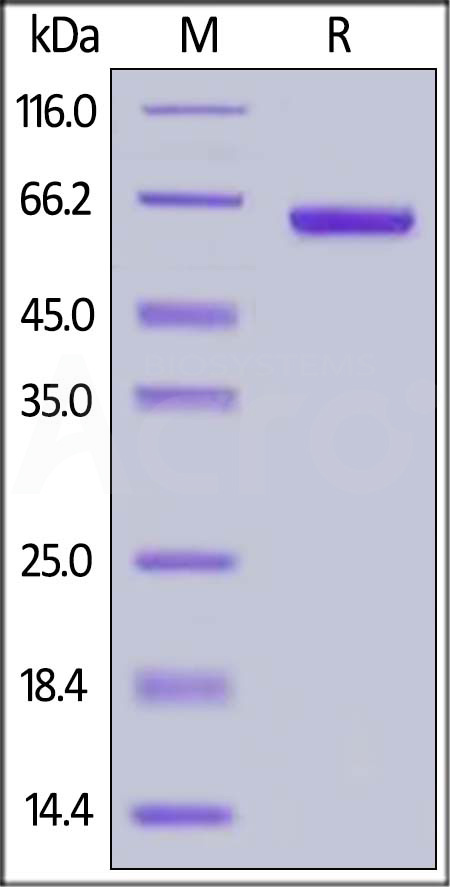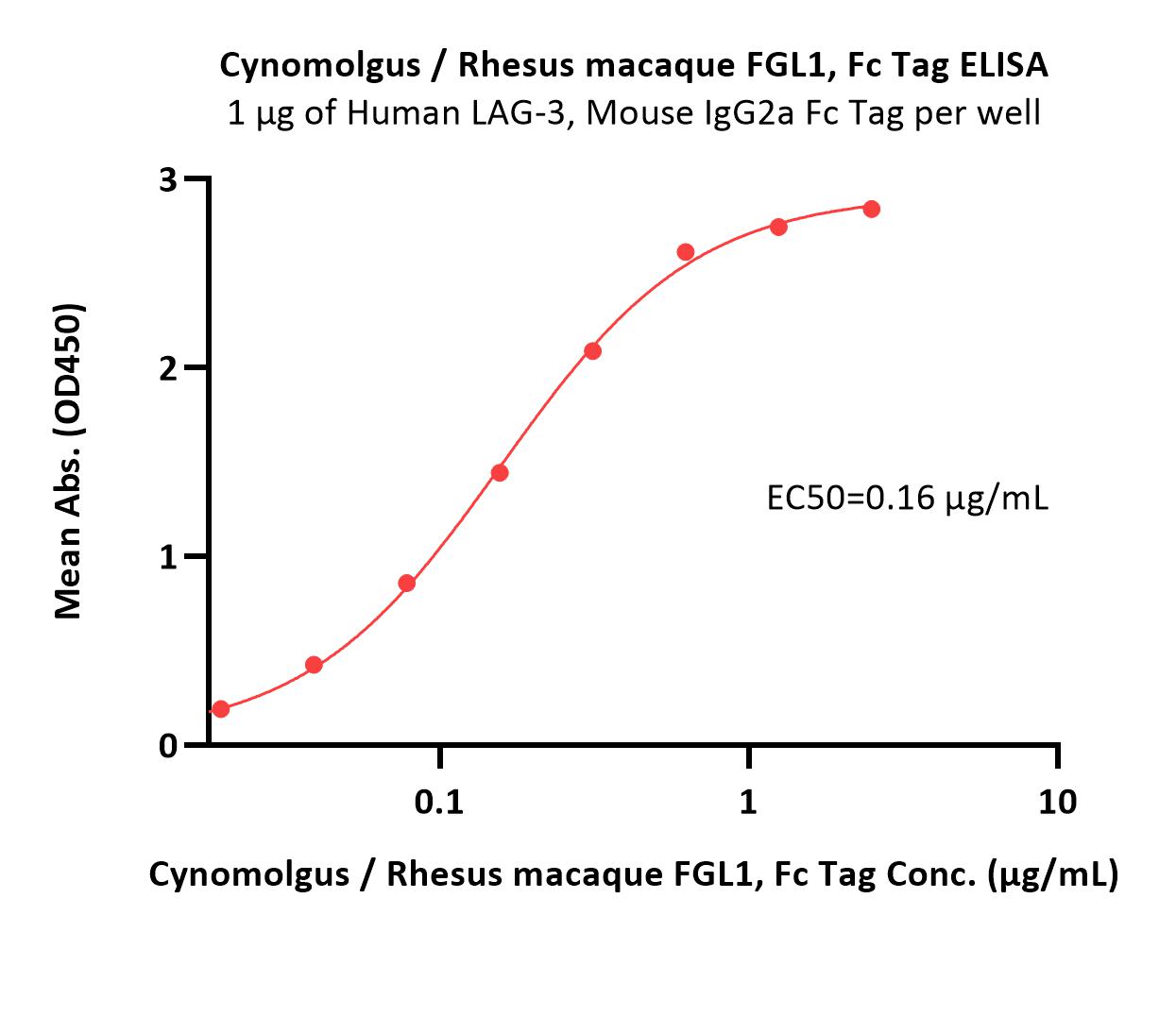分子别名(Synonym)
FGL1,Hepassocin,HP-041,HFREP-1,LFIRE-1,HFREP1
表达区间及表达系统(Source)
Cynomolgus / Rhesus macaque FGL1, Fc Tag (FG1-C5269) is expressed from human 293 cells (HEK293). It contains AA Leu 23 - Ile 312 (Accession # G7N0K6-1).
Predicted N-terminus: Pro
Request for sequence
蛋白结构(Molecular Characterization)

This protein carries a human IgG1 Fc tag at the N-terminus.
The protein has a calculated MW of 60.4 kDa. The protein migrates as 65 kDa under reducing (R) condition (SDS-PAGE) due to glycosylation.
内毒素(Endotoxin)
Less than 1.0 EU per μg by the LAL method.
纯度(Purity)
>90% as determined by SDS-PAGE.
制剂(Formulation)
Lyophilized from 0.22 μm filtered solution in 50 mM Tris, 100 mM Glycine, 150 mM NaCl, pH7.5 with trehalose as protectant.
Contact us for customized product form or formulation.
重构方法(Reconstitution)
Please see Certificate of Analysis for specific instructions.
For best performance, we strongly recommend you to follow the reconstitution protocol provided in the CoA.
存储(Storage)
For long term storage, the product should be stored at lyophilized state at -20°C or lower.
Please avoid repeated freeze-thaw cycles.
This product is stable after storage at:
- -20°C to -70°C for 12 months in lyophilized state;
- -70°C for 3 months under sterile conditions after reconstitution.
电泳(SDS-PAGE)

Cynomolgus / Rhesus macaque FGL1, Fc Tag on SDS-PAGE under reducing (R) condition. The gel was stained with Coomassie Blue. The purity of the protein is greater than 90%.
活性(Bioactivity)-ELISA

Immobilized Human LAG-3, Mouse IgG2a Fc Tag (Cat. No. LA3-H52Aa) at 10 μg/mL (100 μL/well) can bind Cynomolgus / Rhesus macaque FGL1, Fc Tag (Cat. No. FG1-C5269) with a linear range of 0.01-0.313 μg/mL (QC tested).
Protocol
背景(Background)
Fibrinogen-like protein 1(FGL1) is also known as HP-041, Hepassocin, HFREP-1, LFIRE-1. The protective effect of fibrinogen-like protein 1 (FGL1) in liver injury has previously been reported. However, studies have shown that FGL1 may be a predictor of GC patients and a target for GC therapy. Immunocytochemical studies revealed that fgl1 selectively binds to defective spermatozoa in the cauda epididymidis. Northern blot analysis and in situ hybridization demonstrated the high expression of fgl1 in the principal cells of the proximal cauda epididymidis. Immunofluorescence analysis using mouse fibrotic lung tissues suggested that fibrotic regions showed increased expressions of Gtse1 and Fgl1, Gtse1 and Fgl1 are suggested to be novel targets for radiation-induced lung fibrosis.























































 膜杰作
膜杰作 Star Staining
Star Staining













